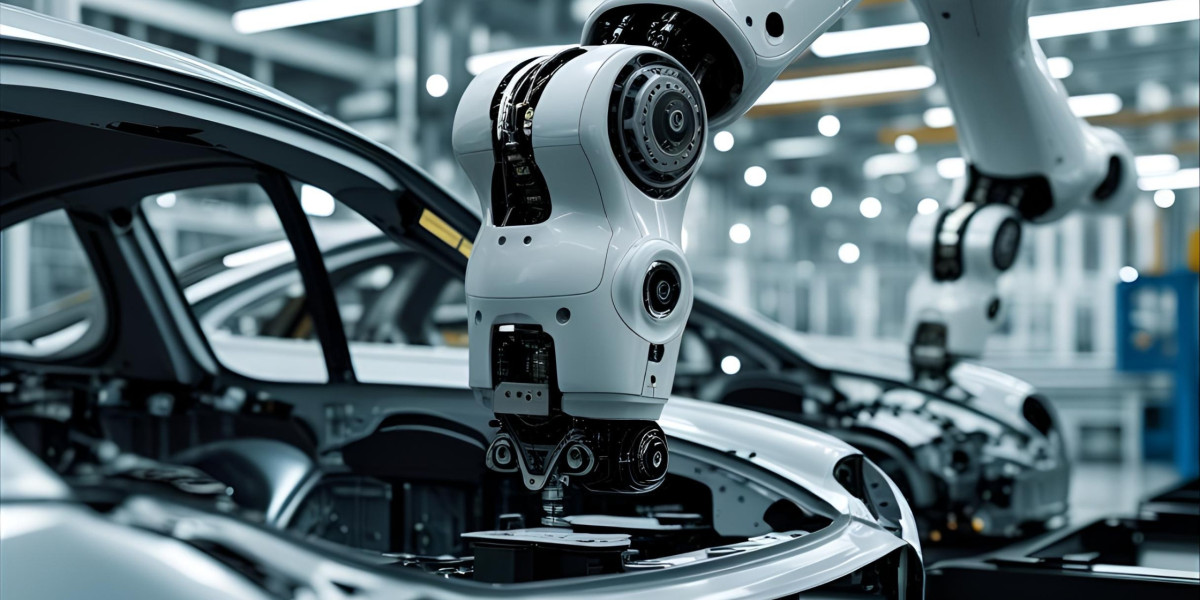The modern automobile is a marvel of engineering, combining thousands of mechanical components into one seamless, powerful machine. At the heart of its construction and performance are car part machines—industrial-grade equipment used to manufacture, assemble, and test automotive components. From engines and transmissions to exhaust systems and braking units, these machines rely on advanced mechanics, automation, and materials science.
1. What Are Car Part Machines?
Car part machines are specialized manufacturing systems used in the automotive industry to fabricate and assemble individual vehicle components. These machines are typically used in factories and supplier facilities to produce:
Engine blocks and cylinder heads
Gearboxes and transmissions
Brake calipers and discs
Steering systems
Exhaust pipes and mufflers
Radiators and heat exchangers
These machines vary in size and function, from CNC milling machines that carve precise engine parts to robotic welding arms that assemble car frames with micron-level accuracy.
2. Engineering Principles at Work
The operation of car part machines is based on foundational concepts in mechanical and electrical engineering:
Kinematics and dynamics guide the movement of machine components, especially in robotic arms and CNC machines.
Control systems and automation algorithms ensure consistent production and precise tolerances.
Thermodynamics is essential in processes like metal casting and heat treatment.
Materials science plays a pivotal role in selecting materials that can withstand the stresses of machining and automotive performance.
Together, these principles allow for mass production of car parts that are reliable, efficient, and safe.
3. Types of Car Part Machines and Their Functions
Let’s break down some of the most essential car part machines in use today:
A. CNC Machines (Computer Numerical Control)
Used to machine engine blocks, crankshafts, and gear housings with extreme precision. These machines cut and shape metal parts using rotating tools, all controlled by computer software.
B. Injection Molding Machines
Used for producing plastic components like dashboards, housings, and coolant reservoirs. Thermoplastic is injected into molds under high pressure to create intricate shapes.
C. Press Machines
Form sheet metal into panels and brackets used in the car's body and structure. Hydraulic and mechanical presses are commonly used.
D. Welding Robots
Used in body assembly to join components using MIG, TIG, or laser welding. These systems require exact alignment and control, often operating 24/7 in production lines.
E. Exhaust Fabrication Equipment
Used to bend, weld, and assemble exhaust systems. High-temperature materials are critical here due to heat exposure from engine operation.
4. Material Selection in Automotive Manufacturing
The performance and safety of a vehicle depend heavily on the materials used in its construction. Automotive manufacturers must balance:
Strength
Weight
Corrosion resistance
Heat tolerance
Cost-effectiveness
This balance is especially critical in parts like exhaust systems, where high temperatures and corrosive gases are common. Stainless steels—especially heat-resistant grades—are often the material of choice.
5. Stainless Steel 321: A Critical Alloy for High-Temperature Applications
SS 321, an austenitic stainless steel stabilized with titanium, is known for its excellent resistance to heat and intergranular corrosion. It's commonly used in automotive exhaust systems, manifolds, and catalytic converter housings, where materials must withstand thermal cycling and oxidative environments.
Key Properties of SS 321:
Withstands temperatures up to 870°C (1600°F)
Superior resistance to carbide precipitation during welding
Good mechanical strength under thermal stress
Durable and long-lasting in high-vibration environments
Manufacturers working with SS 321 tubing often source from a reputable SS 321 tube supplier to ensure consistency, certification, and reliable performance in harsh automotive conditions.
6. Automation and Quality Control in Car Part Machines
Today’s automotive factories are highly automated, using sensors, cameras, and machine learning to ensure every part meets exacting standards.
Laser measurement systems check part dimensions in real time.
Vision systems detect weld integrity and alignment errors.
Machine learning algorithms predict maintenance needs and prevent breakdowns.
Feedback loops allow machines to self-adjust cutting depths or force levels during operation.
These technologies dramatically reduce waste, improve safety, and ensure each car part functions exactly as intended.
7. Sustainability in Car Part Production
As car manufacturers shift toward electric and hybrid vehicles, sustainability in part manufacturing is gaining attention. This includes:
Reducing scrap metal via optimized cutting paths
Using recycled materials when possible
Lowering energy consumption in casting and forming processes
Designing parts for modular replacement rather than full-system repair
Advanced materials like SS 321 also contribute by offering longer service life, which reduces the need for frequent part replacement and waste.
Conclusion: The Science That Drives Every Car
Car part machines are the silent workhorses behind every vehicle on the road. They bring together mechanics, electronics, and metallurgy in highly automated environments to produce parts that meet the automotive industry’s exacting standards.
From robot-guided welders to precision metal-cutting lathes, these machines reflect a high level of engineering expertise. When combined with specialized materials like stainless steel 321, they help create components that can endure the heat, vibration, and stress of daily driving.
Choosing the right SS 321 tube supplier is a critical decision for manufacturers aiming to produce high-performance automotive systems that are safe, efficient, and durable. Whether it's a sedan, truck, or electric vehicle, the future of mobility depends on the flawless performance of every machine-made part.



